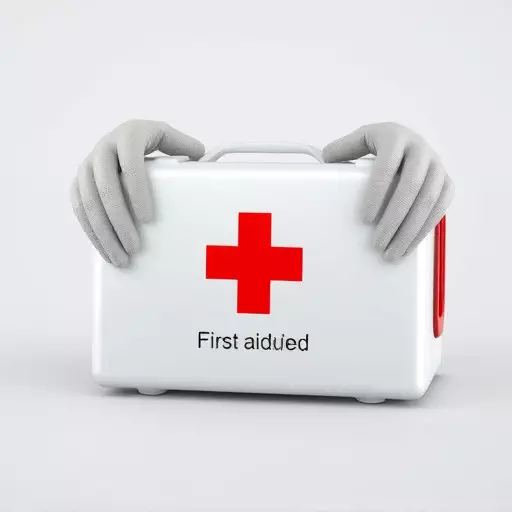Prompt recognition & action are vital for heatstroke victims. Heatstroke, characterized by high body temperature, severe dehydration, and dry skin with no sweating, requires immediate response. First aid and CPR training equips individuals to identify symptoms and provide life-saving interventions like cooling techniques and chest compressions until professional help arrives. Understanding first aid certification requirements ensures preparedness in handling such emergencies effectively. Basic Life Support (BLS) training, encompassing CPR, is crucial for managing heatstroke until medical professionals arrive.
Heatstroke is a severe medical emergency, with swift action crucial for survival. Recognizing its symptoms—such as high body temperature, dry skin, rapid breathing, and confusion—is key to timely intervention. This article guides you through the critical initial steps of first aid for heatstroke, emphasizing the importance of basic life support training and CPR skills. Learn how these essential certifications can equip you to respond effectively in such dire situations, meeting vital first aid certification requirements.
- Recognizing Heatstroke: Symptoms and Signals
- Immediate Actions for First Aid Intervention
- The Role of Basic Life Support Training and CPR in Heatstroke Management
Recognizing Heatstroke: Symptoms and Signals
Recognizing heatstroke is crucial for providing prompt first aid, especially when individuals have no prior medical conditions. Symptoms can vary but often include a high body temperature (above 105°F or 40.5°C), severe dehydration, and hot, dry skin with no sweating. Other signs may be rapid breathing, confusion, dizziness, nausea, and even loss of consciousness. These signals indicate that the body’s heat-regulating mechanisms are failing, requiring immediate action.
First aid and CPR training can equip individuals to recognize these critical symptoms and respond accordingly. Basic Life Support (BLS) certification teaches techniques like cooling the body with cold water or ice packs, fanning to promote airflow, and seeking medical help as soon as possible. Understanding first aid certification requirements is essential, as it ensures that individuals are prepared to handle such emergencies effectively until professional medical services arrive.
Immediate Actions for First Aid Intervention
In case of heatstroke, immediate action is crucial. If someone is experiencing symptoms like high body temperature, dry skin, rapid breathing, or confusion, it’s essential to act swiftly. Call emergency services right away and begin first aid interventions while waiting for help to arrive. The priority is to cool the body down as quickly as possible.
Basic life support (BLS) training, including CPR, can be invaluable in such situations. Cool the person down by moving them to a shaded area and removing unnecessary clothing. Use cold water to cool their skin—you can apply ice packs if available—and keep them still to prevent further heat gain. It’s also important to monitor and maintain their airway, ensure they remain breathing, and provide oxygen if trained to do so, as heatstroke can lead to respiratory distress. Remember, first aid and CPR training could make a significant difference in these critical moments until professional medical help arrives.
The Role of Basic Life Support Training and CPR in Heatstroke Management
Heatstroke is a medical emergency that requires immediate action. Basic Life Support (BLS) training and Cardiopulmonary Resuscitation (CPR) skills play a crucial role in managing heatstroke patients until professional help arrives. BLS training equips individuals with the knowledge to recognize signs of heat-related illnesses, such as excessive sweating, dizziness, nausea, and confusion, which are often early indicators of heatstroke.
With CPR certification, bystanders can provide life-saving interventions if the patient stops breathing or their heart stops pounding. This includes chest compressions and rescue breathing, ensuring blood flow and oxygen delivery to vital organs until advanced medical care is accessible. First aid and CPR training, along with understanding first aid certification requirements, enables individuals to respond effectively in heatstroke situations, potentially reducing the severity of the condition and improving patient outcomes.


